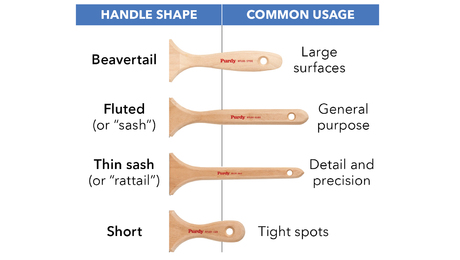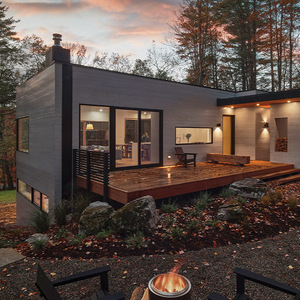Trim and windows with 2 in. foam bd(xps)
In the December 2003 issue Scott Gibson wrote a very insightful article entitled “Does Fiberglass Insulation Still Make Sense”. I am planning a home for northern Vermont and would like to employ his “better” system for walls, which calls for 2×6 framing, 1/2 in sheathing, and 2 in xps foam. However, using 2 in of foam over 1/2 sheathing raises questions about how to handle the extra wall depth for windows, doors, trim, etc. For example, are windows flush to the 1/2 inch sheathing or the foam? If the foam, does one nail/screw thru the window and door nailing fins to the framing (very, very long fasteners?), and don’t all the windows and doors also require custom jamb extensions? Are the windows “secure” enough resting primarily on the xps?
Or, alternatively, should I treat the xps much like brick, setting the windows first and bringing the xps up to the window frames? That seems like a trim challenge as well.
I’d appreciate any advice or referral to any web or print resources. Myself I didn’t see much that was helpful on Owens Corning’s website nor did a google search turn up much that was useful.
Thanks to all….Charlie



















Replies
You could build out your rough openings to allow for the foam. Get your windows with deeper extension jambs, and you'd be set.
But this brings up more questions. What's your siding material? Will you need to provide nailers between the foam panels?
About 10 years ago, I GC'ed a block building that we strapped with 2x and 1/2" ply strips for the 2" foam on the inside, and horizontal 2x3s at 24" OC on the outside to allow for 1 1/2" foam and the vertical 1x8 barn siding we installed.
You can oversize the window openings and line them with 2x6. You can frame the walls with 2x4 and still end up with a wall thickness that is the same as a 2x6 wall. Bring the 2x6 out flush with the foam if using masonry or flush with 1x2 furring strips if using siding. The 1x2 furring strips will provide a surface for attaching the siding and a vented rainscreen behind the siding which will make the siding last much longer.
We install a rubberized asphalt membrane on the osb prior to using the foam. We use polyisocyanurate foam for it's increased R-value. We turn the membrane in under the windows as a pan flashing and over the top as a head flashing.
We form an air barrier with the membrane including stripping the windows in with membrane after installation. In order for the bottom strip to not trap water in the pan, we use strips of a felt protection course fabric to allow water that may enter the pan from a leaking window to wick out to the exterior without allowing much air to leak in.
This system is known as PERSIST or by Lstiburek as the perfect wall. It has many advantages. PERSIST stands for Pressure Equalized Rain Screen Insulated Structure Technique. The entire structure is inside the thermal and moisture control system. Good luck with your project.
Thanks for the input and the good ideas. I was planning on using 2x6 framing. I could drop back to 2x4, or use 2x8 for the window framing on a 2x6 wall. I was planning on using housewrap over the plywood sheathing, and furring strips on the outside of the foam to attach the siding, thereby creating a vertical airspace for venting the siding on the back <alternatively might consider something like "home slicker" matting to accomplish the same thing>. I did a little searching on "persist" systems, and what I found was commercial oriented, but nonetheless seems applicable. You raise an interesting question on whether the housewrap should be replaced by a moisture impermeable material like the one you mention?
I'm still debating between wood shingle/lap and vinyl. Either way I am now thinking that the air space under the siding is desirable (aka "persist") to prevent air pressure from driving moisture into and through the foam <and/or any joints>. Coincidentally I'm also in the beginning phase of designing a coastal home for the FL panhandle, and the theory behind "persist" seems HIGHLY applicable to any structure subject to wind driven rain, as this one would be. So, many thanks for educating me on this subject.
I guess my remaining questions would be 1) if I should replace the housewrap with tar paper or other moisture impermeable material, to go between the sheathing and the foam, and 2) if my thoughts on the airspace behind the siding, regardless of what material is used, makes sense.
Thanks again....Charlie
The membrane I use is the air barrier. It is very difficult to get a house tighter with other methods. I have tried many other systems and this one is where I have landed. It solves all our problems.
As to your two questions:
1) Tarpaper is not moisture impermeable. It sheds liquid water if properly applied but has a fairly high perm rating especially in a damp condition.(wet cup test) You will not have a strong vapor drive on the interior side of the foam insulation. The reason to use the membrane is because it self seals at penetrations, is easy to tie into, provides a superior air barrier, and provides an inexpensive window flashing system. From an energy efficiency and water vapor exclusion standpoint, air tightness is very important. Insulation is almost secondary but not quite.
2)Yes, regardless of the material used behind the foam, the airspace is important, especially with would siding.
Persist has been applied to many commercial buildings and has been percieved as too expensive for residential construction. All it took to bring the cost down on residential was for someone to passionately seek out the methods that would make it affordable to implement in the residential arena. We have done that. I can install it in low cost housing and keep the increased costs offset by construction savings, reduced HVAC equipment size and reduced operating costs.
It is a system for the times in which we find ourselves and the times ahead. I will help in any way I can if you would like. There are many things to work out such as unvented attics, mechanical ventilation, removal of combustion appliances or use of sealed combustion appliances, and proper use of radiant barriers. The list goes on. Proper siting of the home tocontrol solar gain, along with correct overhangs is also very important.